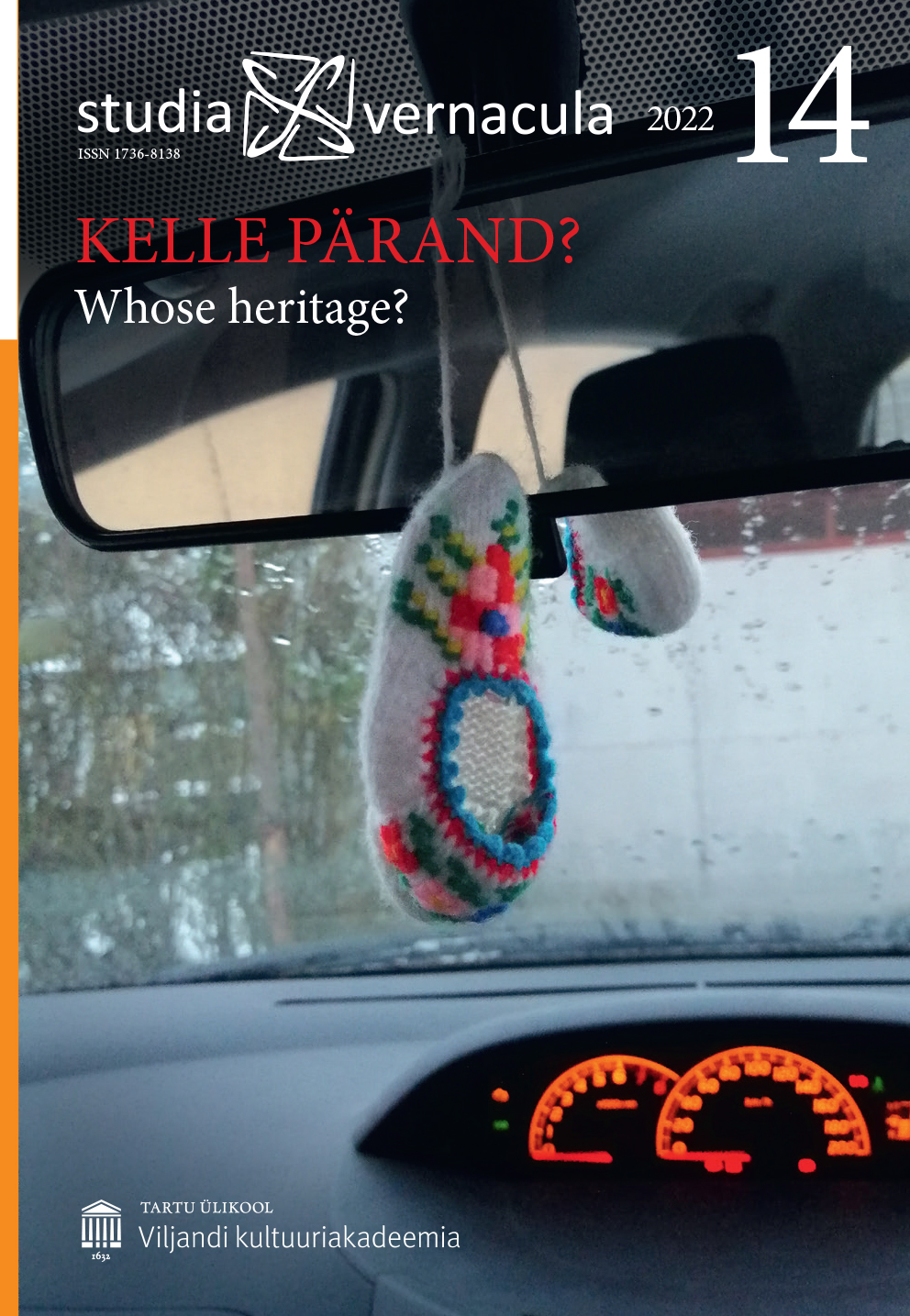Ülevaade Eesti villamajandusest 2022 / Estonian wool industry: the current state
DOI:
https://doi.org/10.12697/sv.2022.14.206-223Abstract
The article draws together data and discussions from the webinar series “Wool February” that took place in the beginning of 2022, initiated by a group of Estonian wool enthusiasts, four of whom co-author this publication. The aim of the webinars was to map the present state of the Estonian wool industry, to gather perspectives on wool management from different stakeholder groups, and to find solutions for the detected problems. As the main presenter of the first webinar, Mats Meriste, put it – it is an economically insignificant, but a strongly emotional topic.
The previous survey of the Estonian wool industry was compiled by the Association of Estonian sheep farmers in 2015. According to the survey, ca 85–90% of the yearly wool production of 170 tonnes was utilised. As of today, the estimated amount of utilised wool has dropped by one fourth, due to a decline in the numbers of sheep. By the end of 2021, there were 65,658 sheep in Estonia; half of them half-breeds. Currently, 31 breeds of sheep are registered in Estonia. The size of the flocks of sheep is shown in Table 1. The table also demonstrates that approximately half of Estonian wool is produced in big flocks, but flocks of different sizes are distributed over Estonia rather evenly (see drawing 2).
Table 3 presents data about the 11 wool factories that currently process Estonian wool, together with information about their machinery and the types of production (carded and semi-worsted). Some smaller factories offer the possibility to order yarn spun from the client’s own wool; most of them are focused on processing local wool, and two bigger ones mainly use wool from abroad.
In order to increase the volume of local wool in production, there is a clear need to develop central systems for buying up the wool, to establish centres for washing wool, and to settle a wool quality system, all preferably with support from the state.
The last part of the article is devoted to showcasing the work done in the field of woollen product development at the Pallas University of Applied Sciences, Estonian Academy of Arts, University of Tartu Viljandi Culture Academy, Estonian University of Life Sciences, and in private companies that develop packaging material and fertilizers from Estonian wool. The overview ends with recommendations and action proposals in order to improve the current state of Estonian wool usage. The first steps towards improving the situation have already been made – a project for creating a digital platform for selling and buying local wool won first prize at the first heritage hackathon organised by UT VCA this spring.

